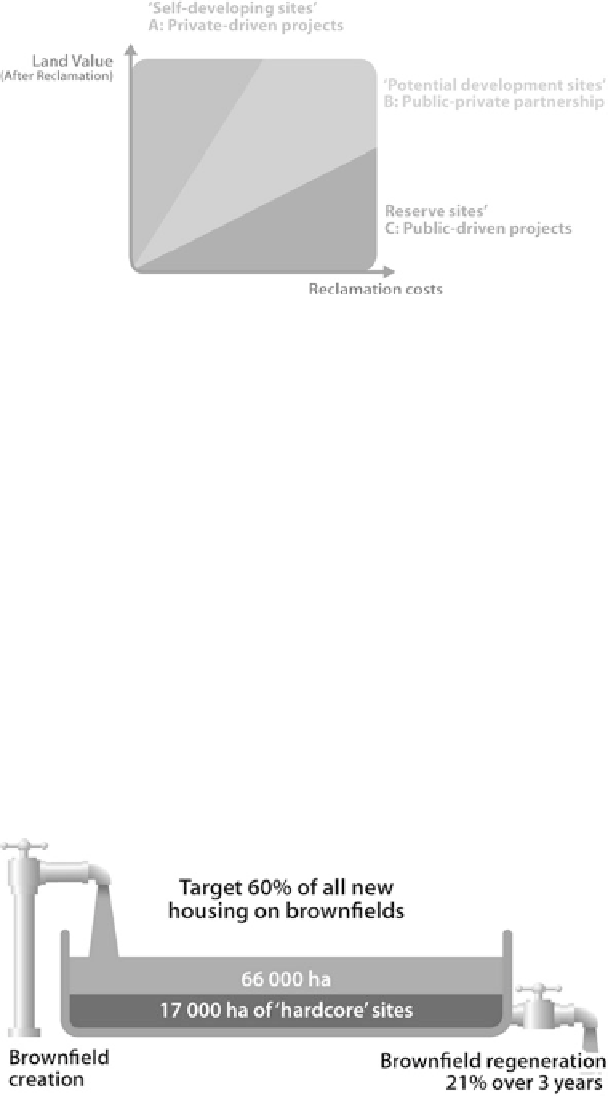Environmental Engineering Reference
In-Depth Information
Fig. 25.5
CABERNET A-B-C model: The role of private and public sector finance (source:
CABERNET
2006
, reproduced with permission)
redevelopment (“hard end use”) can be left derelict and under-used”. The LRT is
modelled on the National Trust which was founded in 1895 following concerns
about the impact of uncontrolled development and industrialisation “to act as a
guardian for the nation in the acquisition and protection of threatened coastline,
countryside and buildings” (National Trust
2009
). The LRT aims to acquire, reclaim
and manage in perpetuity for the public good Type C sites.
25.9.2 Temporal
Sites may meet the CABERNET definition for short or longer periods of time. Their
impact on their communities will grow the longer they remain in a Brownfield state.
Policy makers have recognised this and begun to use the length of time a site has
been Brownfield to prioritise intervention.
CABERNET (
2006
) likened the process of Brownfield creation and reuse to the
filling and emptying of a bathtub (Fig.
25.6
). Structural change creates Brownfields:
Fig. 25.6
CABERNET bathtub model: England's situation (source: CABERNET (
2006
), repro-
duced with permission) NB English policy relates to previously developed land which is commonly
and perhaps euphemistically referred to as Brownfield land

Search WWH ::

Custom Search